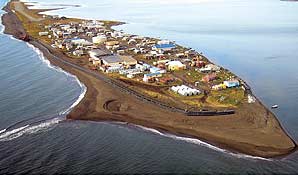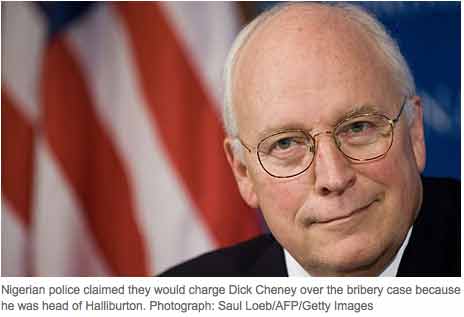David Easterling, NOAA Satellite and Information Services: National Environmental Satellite, Data, and Information Service. (2008). One of the most vigorously debated topics on Earth is the issue of climate change, and the National Environmental Satellite, Data, and Information Service (NESDIS) data centers are central to answering some of the most pressing global change questions that remain unresolved. The National Climatic Data Center contains the instrumental and paleoclimatic records that can precisely define the nature of climatic fluctuations at time scales of a century and longer.
Internationally, the Intergovernmental Panel on Climate Change (IPCC), under the auspices of the United Nations (UN), World Meteorological Organization (WMO), and the United Nations Environment Program (UNEP), is the most senior and authoritative body providing scientific advice to global policy makers. The IPCC met in full session in 1990, 1995, 2001 and in 2007. They address issues such as the buildup of greenhouse gases, evidence, attribution, and prediction of climate change, impacts of climate change, and policy options.
See: Global Warming | The Pew Center on Global Climate Change.
See: Tales from the Ice: Explaining Rapid Climate Change
See: Exxon Confronts Nuns, Calpers Over Global Warming Plans, Boskin
See: Climate Zombies Now Run The House
See: Beware The Green Dragon! | Right Wing Watch
See: Sixty Lame Minutes
In a move that may derail a comprehensive climate change and energy bill in the Senate, one of the measure’s central architects, Senator Lindsey Graham, has issued an angry protest over what he says are Democratic plans to give priority to a debate over immigration policy.
Mr. Graham, Republican of South Carolina, said in a sharply worded letter on Saturday that he would no longer participate in negotiations on the energy bill, throwing its already cloudy prospects deeper into doubt. He had been working for months with Senators John Kerry, Democrat of Massachusetts, and Joseph I. Lieberman, independent of Connecticut, on the a legislation, which they were scheduled to announce with considerable fanfare on Monday morning. That announcement has been indefinitely postponed.
In his letter to his two colleagues, Mr. Graham said that he was troubled by reports that the Senate Democratic leader, Harry Reid of Nevada, and the White House were planning to take up an immigration measure before the energy bill. Mr. Graham has worked with Democrats in the past on immigration matters and was expected to be an important bridge to Republicans on that issue, as well as on energy.
Brendan Smialowski for The New York Times
Senator Lindsey Graham, right, with Senators John Kerry and Joseph I. Lieberman at a news conference in November about proposed energy legislation. Mr. Graham sent his two colleagues a letter Saturday saying he would no longer participate in negotiations on the bill.
Arkansas based blog on Facebook.
All members of the International Brotherhood of Magicians "and gas drillers" agree to:
1) Oppose the willful exposure to the public of any principles of the Art of Magic, or the methods employed in any magic effect or illusion.
First rule in the magicians code. Never reveal your secrets.
Last week there was sort of a vote at AOGC on something they called Rule B19. Arkansas joined Wyoming in becoming one of 2 states that required full disclosure of what frac fluid contains. It was in all the papers. Hooray!
Closer examination revealed that it really wasn't a rule at all, but instead a really a clever bit of slight of hand. It was a magic trick by AOGC to allow the companies to say they were doing something, without really having to do anything at all.
Rule B19 was supposed to cause the companies involved in hydraulic fracturing to completely disclose every chemical involved in the process. We were told by AOGC director Larry Bengal:
"We will tell you what's in the cake, but not teach you how to bake the cake."
See: Arkansans for Gas Drilling Accountability. Dec. 20, 2010. "The SHAM EXPOSED! Log Cabin Democrat and Times Record Expose Last Minute Loophole in AOGC's Rule B-19".
The tar sands in Alberta are so big they can be seen from space...
H2Oil is a documentary, now on DVD.
“In the vast, pristine forests of Western Canada, the ‘war for water’ has already begun…
Thanks to Alberta’s Athabasca oil sands, Canada is now the biggest oil supplier to the United States. A controversial billion-dollar industry is heavily invested in extracting crude from the tarry sands through a process so toxic it has become an international cause for concern. Four barrels of glacier-fed spring water are used to process each barrel of oil, then are dumped, laden with carcinogens, into leaky tailings ponds so huge they can be seen from space.
Downstream, the people of Fort Chipewyan are already paying the price for what will be one of the largest industrial projects in history. When a local doctor raises the alarm about clusters of rare cancers, evidence mounts for industry and government cover-ups. In a time when wars are fought over oil and a crisis looms over access to clean fresh water, which resource is more precious? And what price are we willing to pay? — Gisèle Gordon.”
And now they want to do this in Utah, though on a smaller scale:
A plan to strip-mine oil sands crude on U.S. land for the first time in northeastern Utah is facing legal challenge.
Through a legal appeal, a pair of local environmental groups are working to overturn a decision earlier this month by John Baza, director of the Utah Division of Oil, Gas and Mining (UDOGM). He upheld a permit approval for a 62-acre mine in the remote Uinta Basin of the Colorado Plateau.
Should the legal option fail, the groups said they are determined to block the project – by whatever “peaceful” means...
See: The End of the World As We Know It? The rise of the post-carbon era
Founded in 1919, Halliburton is one of the world's largest providers of products and services to the oil and gas industry. It employs more than 50,000 people in nearly 70 countries."
See: Halliburton's web site on Hydraulic Fracturing
See: Soucewatch article on Halliburton.
"Halliburton is under Justice Department Securities and Exchange Commission investigation over allegations of improper dealings in Iraq, Kuwait and Nigeria," Whitley Strieber wrote March 12, 2007.
See New York time Editorial on the "Halliburton Loophole". (2009)
See LA Times, "Halliburton's Interests Assisted by White House." (2004)
See. John Collins Rudolf. "E.P.A. Subpoenas Halliburton on Fracking." NYT Green Blog. Nov. 9, 2010.
See: Barry Meier and Clifford Krauss. "Inquiry Puts Halliburton in a Familiar Hot Seat". NYT Business Day. October 28, 2010.
See: Dauda Garuba. "Halliburton, Bribes and the Deceit of 'Zero-Tolerance' for Corruption in Nigeria." African Community of Practice on Managing for Development Results. (cop-mfdr-africa.org). August 26, 2010.
EPA Update. November 9-10 2010
On November 9, 2010, EPA announced that eight out of the nine hydraulic fracturing companies that received voluntary information requests in September agreed to submit timely and complete information to help the Agency conduct its study on hydraulic fracturing. However, the ninth company, Halliburton, has failed to provide EPA the information necessary to move forward with this important study. As a result, and as part of EPA's effort to move forward as quickly as possible, today EPA issued a subpoena to the company requiring submission of the requested information that has yet to be provided.
See: Letter sent by EPA to Halliburton PDF (2pp, 516K).
See: The subpoena sent by EPA to Halliburton PDF (11pp, 3.5M).
Update:
See: FCPA Blog | UK Court Won't Block Telser Extradition
Judson Berger. "Nigeria Drops Bribery Charges Against Cheney, Halliburton After $250M Deal Struck." Canada Free Press. Dec. 21, 2010.
Nigeria’s government has reportedly dropped bribery charges against former Vice President Dick Cheney and Halliburton, the energy firm he once headed, after the company agreed to pay a hefty settlement.
Fear about environmental damage from Marcellus Shale natural gas drilling is often trained on what could happen deep underground, but some of the gravest hazards posed by the process are driven in trucks, stored in tanks, carried through hoses and left in surface pits at natural gas well sites.
Concentrated chemicals, as well as wastewater containing toxic levels of salts and metals, are stored, produced or transported in large quantities at each well site, creating the potential for tainting drinking water or seeping into ponds and streams.
While recent enforcement action against Cabot Oil and Gas Corp. - the company deemed responsible for methane leaks and nearly two dozen spills in Susquehanna County in the last two years - has drawn attention to the danger of spills, information about the industry-wide frequency and impact has not been reported publicly.
See: Cabot Oil & Gas’s Marcellus Drilling to Slow After PA Environment Officials Order Wells Closed, Lustgarten, Abrahm . ProPublica. (2010.
See: Commonwealth of Pennsylvania DEP takes aggressive enforcement action against Cabot Oil.
Perched on an Alaskan barrier island, the village of Kivalina faces imminent destruction because of melting sea ice.

Kivalina, Alaska, has sued energy companies over
melting sea ice that threatens the town.
AP Photo/Northwest Arctic Borough
Now, the community's legal effort — which pins the blame on energy companies for the change in climate — is in danger as well. So, too, is a pair of high-profile climate-change suits that may be taken up by the U.S. Supreme Court, one involving an effort by Connecticut and other states to reduce greenhouse-gas emissions, the other stemming from Hurricane Katrina.
See: Greenhouse Gas Emissions Case Heads to Supreme Court.
See: SCOTUS (Supreme Court of the United States) Blog.
All three suits rely upon the theory that climate change is a public nuisance and, therefore, state and local governments, as well as individuals who have been harmed, can sue for damages or injunctions. The Obama administration, in a recently filed brief in the Connecticut case, American Electric Power v. Connecticut, is arguing that it may not be prudent for the high court to allow these types of cases to go forward.
If the justices grant review, the stage could be set for reversal of a rare, recent high court victory for environmentalists, the 2007 decision in Massachusetts v. Environmental Protection Agency. The 5-4 ruling in the Massachusetts case found a special standing to sue for states that brought that first global-warming case to the Supreme Court. The majority also held that the Environmental Protection Agency (EPA) had authority under the Clean Air Act to regulate greenhouse-gas emissions.
"If the solicitor general gets the Court to take cert, I would be very confident they're going to undercut Massachusetts v. EPA," said environmental scholar Randall Abate of Florida A&M University College of Law. "The sooner the Court gets to revisit it, the more likely it will be gutted. The trend has been to be more restrictive on standing. This is really making the environmental community nervous and angry."
The Katrina-related case — In re Ned Comer — is also at the Supreme Court but is coming to justices in an unusual fashion — through a petition for a writ of mandamus. The Alaska case — Native Village of Kivalina v. Exxon Mobil Corp. — is undergoing briefing in the U.S. Court of Appeals for the 9th Circuit.
 "Each case has its legal strong points and each has its legal vulnerabilities," said James May of Widener University School of Law, who has filed amicus briefs on behalf of environmental law professors in the Connecticut and Kivalina cases.
"Each case has its legal strong points and each has its legal vulnerabilities," said James May of Widener University School of Law, who has filed amicus briefs on behalf of environmental law professors in the Connecticut and Kivalina cases.
"As a federal litigator for 15 years and a law professor for 20, what I find concerning is the executive branch stepping in front of states and private litigants who are trying to get their day in court. If this was the Bush administration doing this, I think it would be a very divisive political issue."
...The energy companies' case is now stronger because of the EPA's actions and the solicitor general's brief, he said. "I don't know if it gets you there finally. If I was writing plaintiffs' briefs, I would be pounding the table and saying, `If you're telling me this is a political question, the political arm to deal with this is Congress and they have done nothing.' "
 Which is exactly what Pawa, who represents three land trusts in the Connecticut case as well as the Kivalina villagers, said. "The solicitor general's brief is not very damaging because it was unpersuasive," Pawa said. "It's just wrong. It tries to repackage the political-question doctrine, which was thoroughly dealt with on its merits by the 2d Circuit, as prudential standing.
Which is exactly what Pawa, who represents three land trusts in the Connecticut case as well as the Kivalina villagers, said. "The solicitor general's brief is not very damaging because it was unpersuasive," Pawa said. "It's just wrong. It tries to repackage the political-question doctrine, which was thoroughly dealt with on its merits by the 2d Circuit, as prudential standing.
"And, there are no federal regulations applicable to existing coal-fired power plants. They haven't even been proposed. There have been some rules proposed for new plants, but no rules for existing plants, which are at issue in these lawsuits."
In looking at the various iterations of climate-change litigation, the most "evolved" of the three cases is Kivalina, according to Jones and others, and the one that worried most corporate defendants. "It contained a conspiracy count, which is what the plaintiffs' bar hoped would get them money damages," Jones said. "And it has more sympathetic and real plaintiffs than the other cases. Here you have a particular village that is going to be under water."
Kivalina from Cristina Valdivieso + Jon Connor on Vimeo.
Various scientific and government studies report that the right combination of storms could flood the entire village at any time and have recommended relocation at costs varying up to $400 million.
If the Court does not act on Connecticut or Comer, Jones said, "I think Kivalina will go forward. I think that one could end up being the most dangerous of any of them. But getting into court is one thing; proving causation is a very hard row to hoe."
See: Shearer, Christine. "My Journey Into Kivalina v. ExxonMobil et al." Countercurrents. Dec. 1, 2010.
See also: Shearer, Christine. Kivalina: A Climate Change Story. Haymarket Books, 2011. Print.
Evidence that Pennsylvania’s Department of Homeland Security is working on behalf of the natural gas industry came to light in early September when internal department bulletins were leaked to an anti-drilling listserve. The department had contracted an Israeli-linked agency to spy on anti-drilling activists.
The story was later leaked to reporters at Pro Publica and the City Paper. These papers’ articles suggested a direct connection between the state agency and the natural gas industry. The exposure fueled outrage from targeted groups.
Gov. Ed Rendell had to retreat. On Sept. 14, he held a press conference to apologize to groups who had been monitored. “Protesting is not a threat, it’s an American right,” said Rendell. He said he was “appalled” and announced that the state would not renew its $125,000 no-bid contract with the Institute of Terrorism Research and Response, set to expire in October.
See: Pa. Governor Apologizes for Tracking Enviro Extremists, but Questions Remain - ProPublica
"Who the Heck is Calvin Tillman?"
"...Texas allows public domain seizure for pipelines. The many pipelines feeding the compressors cross private property rendering it unfit for future development.
The cumulative effect of the gas industry on the residents and their property values has caused Calvin, their mayor, to refer to Dish as a Sacrifice Zone.
Pennsylvania based blog. Includes many links and articles.
- About the writer
- Informational Links
- Listening Projects, Video and Stories
- Maps and Images
- More Blogs
- Take Action!
Updated frequently.
Blogroll links to
Categories include:
- Drilling in NY (28)
- Drilling in other places (26)
- drilling in pa (167)
See: Dish Mayor Calvin Tilman Testifies at Railroad Commission - Oil and Gas Lawyer Blog.
On 9-15-10, attending the EPA meeting on hydraulic fracturing for shale gas, professor of ecology and environmental biology, independent scientist Robert Howarth, Ph.D.,

told a news conference that natural gas extracted from shale is nearly as dirty as coal or perhaps even dirtier in terms of greenhouse gas footprint...
good grief:
...Our public comment to EPA was, in part, as follows:
Based on what we know so far, the EPA should order immediate suspension of high-volume hydrofracking until your study is complete. Let science guide policy. Otherwise we’re conducting a massive human, animal and earth experiment.
The gas will be there; it's not going away. Ideally any further carbon extraction at all should be banned while we accelerate development of sustainables but since that's probably not in the cards politically, it's imperative we at least do everything we can to reduce the harm we are doing to ourselves and our environment by extending our carbon binge in shale gas extraction. As others have mentioned,
I especially urge you to incorporate into your study the research of Prof. Robert Howarth and his team at Cornell on the methane greenhouse footprint that makes shale gas look nearly as dirty as coal if not even worse.


















